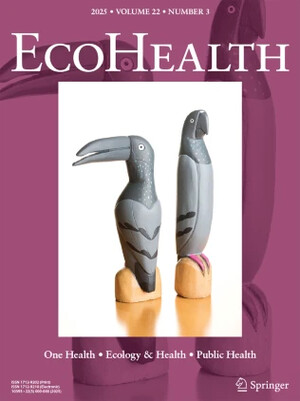
Prevalence of tick-transmitted pathogens in cattle reveals that Theileria parva, Babesia bigemina and Anaplasma marginale are endemic in Burundi
Abstract
Tick-borne diseases (TBDs) constitute a major constraint for livestock development in sub-Saharan Africa, with East Coast fever (ECF) being the most devastating TBD of cattle. However, in Burundi, detailed information is lacking on the current prevalence of TBDs and on the associated economic losses from mortality and morbidity in cattle as well as the costs associated with TBD control and treatment. The aim of this study was, therefore, to assess the prevalence and spatial distribution of tick-borne pathogens (TBPs) in cattle across the major agro-ecological zones (AEZs) in Burundi.In a cross-sectional study conducted in ten communes spanning the five main AEZs in Burundi, blood samples were taken from 828 cattle from 305 farms between October and December 2017. Evidence of Theileria parva infection was assessed by antibody level, measured using a polymorphic immunodominant molecule (PIM) antigen-based enzyme-linked immunosorbent assay (ELISA) and by a T. parva-specific p104 gene-based nested PCR. Antibodies against Theileria mutans infection were detected using the 32-kDa antigen-based indirect ELISA, while the 200-kDa antigen and the major surface protein 5 (MSP5)-based indirect ELISA were used to detect antibodies against Babesia bigemina and Anaplasma marginale, respectively.The prevalence of T. parva across the ten communes sampled ranged from 77.5 to 93.1% and from 67.8 to 90.0% based on the ELISA and PCR analysis, respectively. A statistically significant difference in infection was observed between calves and adult cattle; however, T. parva infection levels were not significantly associated with sex and breed. The seroprevalence indicating exposure to T. mutans, B. bigemina and A. marginale ranged from 30 to 92.1%, 33.7 to 90% and 50 to 96.2%, respectively. Mixed infections of TBPs were detected in 82.91% of cattle sampled, with 11 different combinations of pathogen species detected .The findings indicate that T. parva, A. marginale and B. bigemina infections are endemic in Burundi. Knowledge of the spatial distribution of TBPs will facilitate the design of effective targeted strategies to control these diseases. There is a need for further investigations of the distribution of tick vectors and the population structure of TBPs in order to identify the key epidemiological factors contributing to TBD outbreaks in Burundi.
Citation
Nyabongo, L., Kanduma, E.G., Bishop, R.P., Machuka, E., Njeri, A., Bimenyimana, A.V., Nkundwanayo, C., Odongo, D.O. and Pelle, R. 2021. Prevalence of tick-transmitted pathogens in cattle reveals that Theileria parva, Babesia bigemina and Anaplasma marginale are endemic in Burundi. Parasites and Vectors 14:6.









